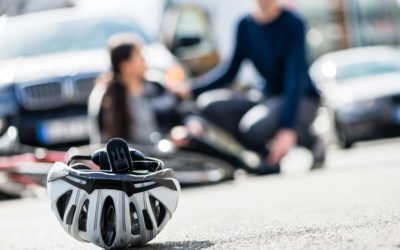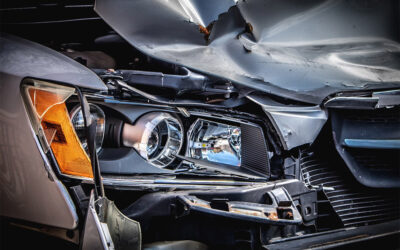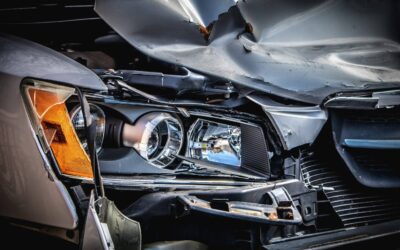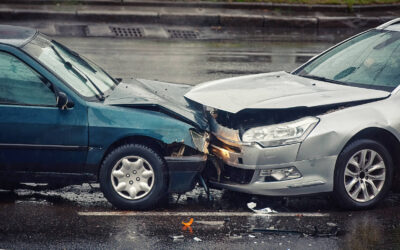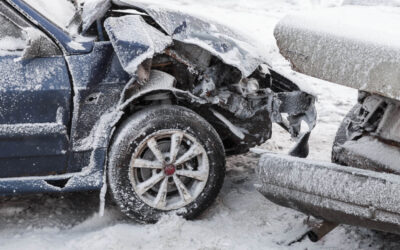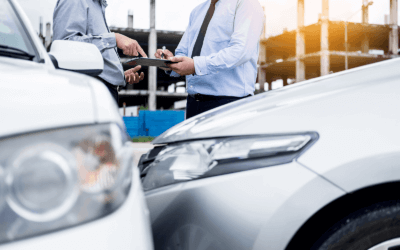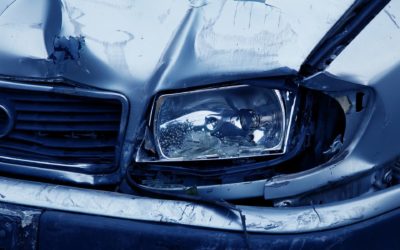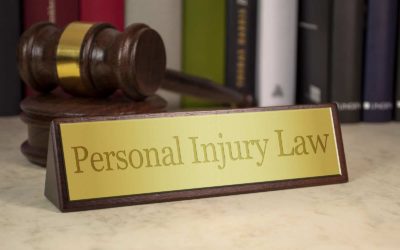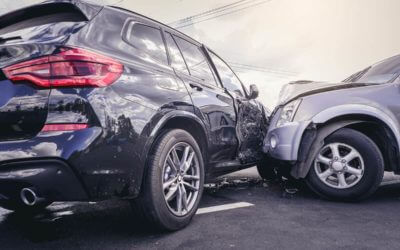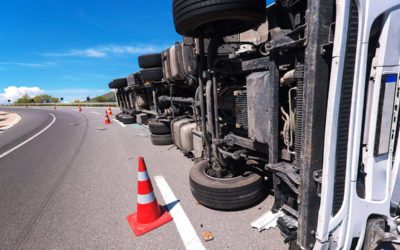Personal Injury Blog
Regardless of who you are or what type of accident you’ve been in, our attorneys can help put your fears at ease and assist you with obtaining the justice you deserve.
When to Get an Attorney for a Car Accident
In the event of a car accident, it can be confusing to know exactly what to do next. Do I call 911? Do I need to file a police report? If there aren’t any major injuries or damages, do I have to call my insurance company? And of course—do I even need a car accident attorney?
The Difference Between Buzzed and Drunk Driving Accidents
Drunk driving is one of the leading causes of car accidents and traffic fatalities. In fact, someone dies in a drunk driving accident in the United States every fifty minutes—totaling out to over 10,000 deaths in a single year.
What’s the Average Amount for a Personal Injury Settlement?
If you’ve been in a car accident or sustained a personal injury because of someone else’s negligence, you should be able to recover damages such as medical expenses and lost wages. However, determining the actual value of your claim’s worth can be tricky. In many...
Pros and Cons of Hiring an Attorney After a Car Accident
Experienced and reputable attorneys provide a level of consulting that goes beyond letting you know when to take your case to court. Having an attorney in your corner when facing insurance companies can mean the difference between receiving no payment or receiving full settlement.
What to Do After a Bike Accident
According to Statista, over 47 million people hit the road as bicyclists in the United States. Bicycling has grown over recent years as an enjoyable hobby, type of exercise, and effective form of transportation. However, riding your bicycle does not come without risks.
7 Steps After a Motorcycle Accident
As a biker, the last thing you want to happen is being in an accident. Sadly, there are times when this is unavoidable. If you’re the victim of a motorcycle accident, find out what steps you need to take to reduce injury and avoid more danger. All too often, accident...
Do I Need to Hire a Personal Injury Attorney?
After being involved in a car accident or any other type of personal injury accident, you should call a personal injury attorney. These professionals can help you understand your case, assess its full value, and if needed, represent you in court.
What to Do If Your Car Accident Claim Is Denied
It can be disheartening and infuriating when an insurance company denies your accident claim. However, you must stay calm and not call the insurance company, but give them a piece of your mind. Auto insurance companies usually deny claims to avoid dispersing payment....
What to Do If You’ve Been Injured in a Slip and Fall Accident
Knowing what steps to take after a slip and fall accident can help you recuperate from your injuries and build a substantial claim against the insurance company and a business or property owner. If you have been injured in a slip-and-fall accident, you can take legal...
Common Mistakes to Avoid in Personal Injury Cases
Accidents happen in life. When they occur, people can get injured or lose their life. When another party is deemed responsible for the accident, the affected party can submit a personal injury claim for compensation. However, many victims unknowingly make mistakes...
What Are the Steps Involved in a Personal Injury Lawsuit?
Every personal injury claim varies based on certain situations and facts regarding each accident. However, at some point, practically every personal injury claim will go through similar steps which are discussed below. Many individuals don’t know about the personal...
What Should You Do If You’ve Been a Victim of Road Rage or Aggressive Driving?
92% of people have witnessed at least one road rage or aggressive driving incident in the last year. In the same survey, 89% of respondents said they have been a victim of road rage themselves. In traffic-heavy cities like Denver, road rage isn’t just frustrating—it...
Seeking Compensation for Pain and Suffering After a Car Accident
In many personal injury cases, plaintiffs ask for compensation for expenses they accrue along with pain and suffering. Costs for medical and drug bills are simple to authenticate with evidence like invoices and receipts. If you or a loved one has suffered an injury...
How Long to Resolve a Case?
When it comes to personal injury claims, the length of the process could be affected by a range of factors, such as the seriousness of the injuries, liability, and negotiations. If you have been injured and are dealing with financial difficulties, you understandably...
Understanding Liability and Compensation in Rear-End Collision Cases
If you’re involved in a rear-end collision, you might worry about liability and compensation. When another motorist smashes into your vehicle from behind, the fault usually lies with them. However, this isn’t always the case. Keep reading to learn more about rear-end...
Settlement or Trial: Which Path Should You Take in Your Car Accident Claim?
Most personal injury claims, especially those involving car accidents, are settled way before going to trial. However, some cases end up in court for a vast number of reasons. Until you can meet with a Denver personal injury attorney, here is some information about...
11 Most Common Mistakes to Avoid After a Car Accident
When you’re in a car accident, your safety and health are your first concern. While you only want to get back to normal, your next steps are vital. After this tumultuous event, you can easily make mistakes that can be detrimental and delay your recovery. Here are the...
Types of Compensation Available in Car Accident Claims
Navigating the outcome of an auto accident can be daunting, especially when it comes to damages, injuries, and the difficulties of insurance claims. Understanding the types of compensation available is vital to making sure you get what you fairly deserve for your pain...
How Is Fault Determined in a Car Accident and Why Is It Important?
If you or someone you love has been involved in a car accident, it may result in legal and/or insurance claims. Determining fault is crucial in these cases. If you’ve been in a car accident in the past, you know that determining who was at fault isn’t easy. In some...
Do You Need a Lawyer for a Car Accident That Was Your Fault?
Car accidents are stressful events, and the aftermath can be a complex maze of legal and insurance procedures. If you find yourself at fault in a car accident, you might wonder whether hiring a lawyer is necessary or beneficial. This blog explores the nuances of...
Colorado’s Traction Law: Essential Information for Safe Driving
Colorado, known for its picturesque landscapes and snowy winters, presents unique challenges for drivers. To ensure safety on the roads, particularly during winter months, the Colorado Traction Law is in place. Understanding and complying with this law is crucial for...
Navigating Winter Roads: Colorado’s Specialized Traffic Laws and Enforcement Strategies
The impact of Colorado's winter weather on traffic laws and enforcement is a multifaceted topic that delves into how extreme weather conditions influence driving regulations and the enforcement of these laws. This blog will explore the various aspects of this subject,...
Do Car Accident Lawyers Help You in Claiming Insurance?
Accidents can be a terrifying experience. In the aftermath of a collision, victims often find themselves overwhelmed with emotions, dealing with physical injuries, and facing the daunting task of navigating insurance claims. This is where car accident lawyers can step...
Can I Lose My House Due to an At-Fault Car Accident? Understanding Colorado’s Laws
Denver, with its majestic Rocky Mountains backdrop, bustling downtown area, and rapidly growing population, sees its fair share of vehicular traffic and, unfortunately, car accidents. As a resident, you might wonder: if I'm at fault in a car accident, can I...
How Weather Can Impact Your Car Accident Claim: An In-Depth Look
Car accidents can be life-altering experiences, and making a claim for compensation can be complex and challenging. When weather conditions play a role in the accident, the process can become even more complicated. In this blog post, we will explore how weather can...
Understanding the Reasons: Why a Personal Injury Lawyer May Not Accept Your Case
Navigating the landscape of personal injury law can sometimes be as bewildering as the injury itself. You might wonder why a personal injury lawyer might decline to take on your case even when the fault seems clear-cut. It’s essential to understand that personal...
The Importance of Documenting Your Injuries After a Motor Vehicle Accident
According to the Colorado Department of Transportation, car accidents have been on the rise every year. When you are involved in a motor vehicle accident, it can be difficult to figure out what to do next. In every case, your safety is paramount and taking care of it...
Is Lane-Splitting Legal in Colorado?
Lane-splitting is a contentious issue for many motorcyclists in the state of Colorado. Some argue that lane-splitting is more convenient and actually prevents accidents, while others say that it increases the risk of accidents. But what is lane-splitting and who is in...
Can I Switch Attorneys During a Personal Injury Case?
If you’re not happy with your legal representation during your case, you may be wondering if it’s possible to switch attorneys during a personal injury case. While your Denver personal injury attorney will do everything they can to help you receive a fair and full...
How Much Do Personal Injury Attorneys Charge?
Before filing a personal injury claim, it’s natural to have many questions. One of the most common, as one might expect, comes down to the costs of hiring a personal injury attorney. Before working together, many of our clients will ask: How much does a personal...
Are Personal Injury Settlements Taxable?
Are personal injury settlements taxable? If you’ve been in an accident, such as a car accident, you could be eligible for a personal injury settlement. This settlement, which generally takes the form of a cash payment that can be paid in a lump sum or over a period,...
How are Personal Injury Settlements Paid Out?
After a successful personal injury claim, it’s common to wonder how personal injury settlements are paid out. When someone is injured due to the negligent actions of another person, party, or organization, they can file a personal injury lawsuit with the assistance of...
What is a Personal Injury Claim?
It’s a common question we often hear in our office: what is a personal injury claim? Well, if you’ve been the victim of a personal injury accident, you may be advised to file a personal injury claim. But if you’ve never done so before, you may be confused as to what...
What Percentage of Personal Injury Cases Actually Go to Trial?
If you’ve hired a personal injury attorney in Denver for your personal injury claim, you naturally want the case to go as quickly as possible. When recovering from your injuries, the last thing you need is a personal injury claim that just drags on and on with no...
What is a Wrongful Death Suit?
No circumstance is more challenging to endure than the loss of a loved one. It can be even more difficult for the surviving loved ones when the death was caused by the negligence or misconduct of another person, company, or organization. However, if this is the case,...
Everything You Need to Know Before Hiring a Denver Personal Injury Attorney
Deciding to hire a Denver personal injury attorney after an accident is a smart and important decision. Once you’ve decided to seek legal counsel, you’ll then need to determine which personal injury law firm is right for you. No two personal injury lawyers are the...
Mistakes to Avoid When Hiring a Personal Injury Attorney
If you’re involved in a personal injury accident, it’s very important to hire the right personal injury lawyer to represent you. While many may rush to hire the first attorney they come across with a quick online search, it’s critical to take your time and do the...
How to Prove Bad Faith Insurance
Bad faith insurance isn’t always clear, especially if you aren’t in the insurance industry, and there are gray areas that can be difficult to navigate. It is in insurance companies' best interest to pay as little compensation to their policyholders as possible. If you...
When Do I Call a Denver Personal Injury Attorney?
Whether it’s a car accident, motorcycle accident, slip and fall accident, or any other type of personal injury, the steps you take following the accident are very important. After you’ve received medical care and contacted your insurance company, it’s a good idea to reach out to a local personal injury attorney. This quick phone call can make all the difference in helping you receive the financial compensation you deserve.
Who is Liable in a Car Accident?
Determining car accident liability is no easy feat. With various legal components, such as statutes, common law, and torts, it’s challenging enough. But when you add insurance companies’ ability to obscure the truth and issue settlements for less than what you deserve, the process can be downright unbearable.
How Long Does a Car Accident Settlement Take?
There are several other factors that can affect the time it takes to reach a settlement. Having an experienced car accident attorney on your side will help you avoid the mistakes that cause settlement delays.
7 Questions to Ask Your Car Accident Attorney
After a car accident, what do you do next? First, you should receive medical attention and contact your insurance company. But then what? Even if you believe you were partially at fault, you should reach out to an experienced car accident law firm.
Will Health Insurance Cover an Auto Accident?
Experienced car accident lawyers can help you receive the compensation you deserve if you’ve been involved in a car accident. In the wake of an accident, you might not be aware of all of your injuries and you must receive a medical evaluation to rule out more extensive injuries. Learn more here.
What You Should Do After a Car Accident
Being involved in a car accident is a frightening experience. No matter the type of crash, it’s natural to be scared, confused, and unsure of what to do next. It’s important to first check on the safety of yourself, your passengers, and the other driver.
How Does a Personal Injury Lawsuit Work?
After a personal injury, you may wonder whether hiring a personal injury lawyer is the right move for you. Continue reading to learn what you can expect if you plan on filing a personal injury lawsuit for the first time.
Who Pays for the Attorney After a Car Accident?
Determining who pays for your car accident attorney comes down to a few factors. If your attorney operates on a contingency fee, they will only charge you if you win your case. Before enlisting the help of a car accident attorney, there are a few questions to consider.
What to Look for in a Personal Injury Law Firm
We’re providing a brief guide to help you know what to look for in a personal injury law firm. We start by defining this type of law firm, what kinds of cases personal injury attorneys handle, and how to select the right personal injury lawyer for your case. Choosing the right personal injury law firm from the beginning will help save you time, money, and headaches down the road.
Colorado Car Accident Statistics
In this blog, we take a closer look at the issues that are common causes of car accidents in Colorado. In order to better understand how prevalent these factors are and what they may cause for you as an individual driver on the road, it’s important to review some statistics about auto accidents throughout Colorado.
What Kinds of Cases Do Personal Injury Attorneys Handle?
Most of us have heard of a personal injury attorney, but do you know what they actually do? A personal injury attorney provides legal representation for those involved in personal injury cases.
Is it Worth it to Hire a Personal Injury Attorney?
In the event of a car accident, bicycle accident, truck accident, or any other personal injury case, you’ll definitely want the assistance and representation of a professional, experienced personal injury lawyer.
What to Ask a Truck Accident Lawyer
Following a truck accident, it’s expected to be confused, scared, and unsure of what to do next. For most people, this includes a series of phone calls. Call 911.
What is Bad Faith Insurance?
Merriam Webster defines bad faith as a lack of honesty when dealing with other people. In the context of insurance, it’s not much different. Bad faith attorneys protect you from insurance companies lying to you about your claims.
Whose Insurance Do You Use After an Auto Accident?
Most everyone has been in the unfortunate situation of standing outside their cars after a car accident and debating with a stranger about how one of you will have to pay for the damages. But when it comes down to the law, whose insurance do you use after an auto accident?
How to Negotiate Subrogation Claims
To better understand the subrogation negotiation process, you must first understand what subrogation is, why it happens, and who it affects.





